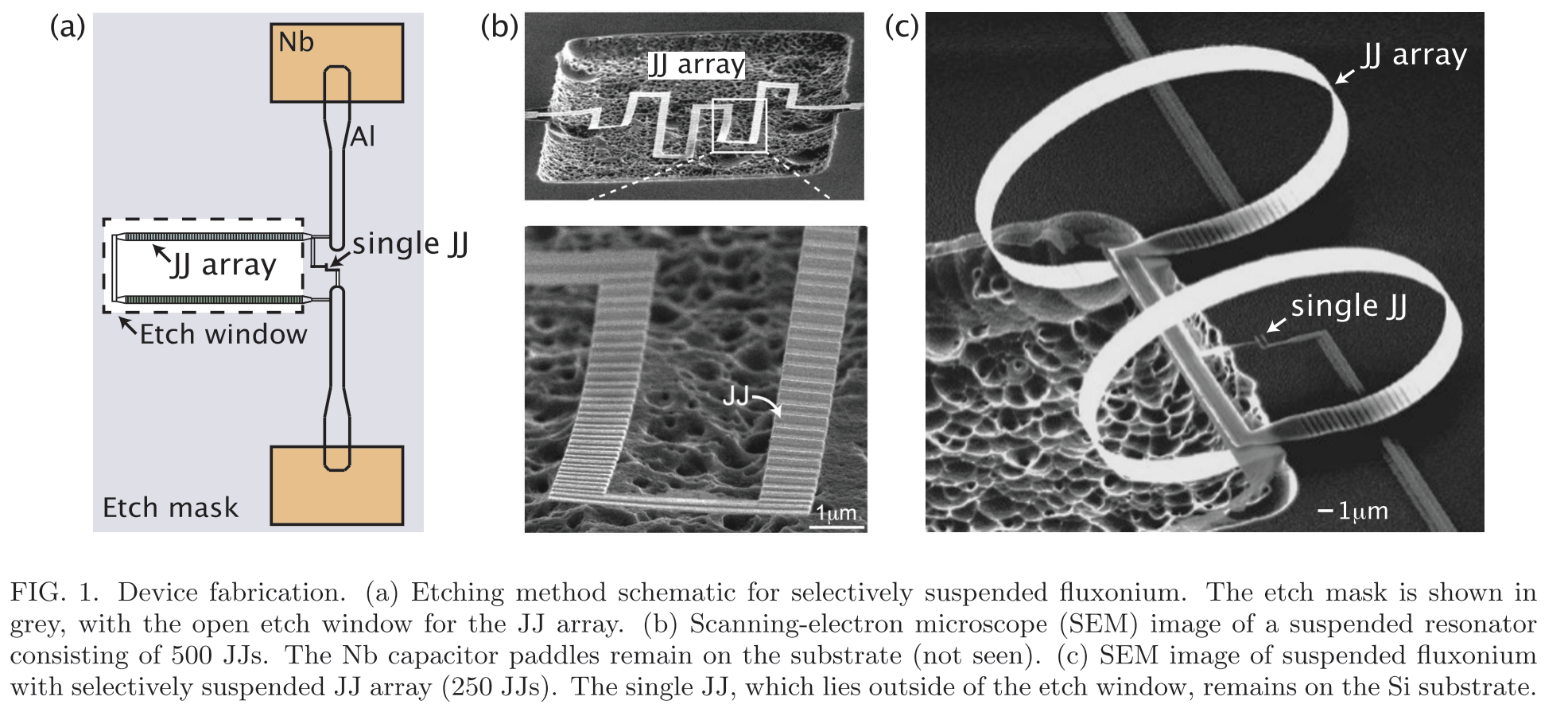Implementation of scalable suspended superinductors Christian
2024-11-24 19:13
2703 浏览
source:ArXiv: 2411.10396

Abstract: Superinductors have become a crucial component in the superconducting circuit toolbox, playing
a key role in the development of more robust qubits. Enhancing the performance of these devices can be achieved by suspending the superinductors from the substrate, thereby reducing stray capacitance. Here, we present a fabrication framework for constructing superconducting circuits with suspended superinductors in planar architectures. To validate the effectiveness of this process, we systematically characterize both resonators and qubits with suspended arrays of Josephson junctions, ultimately confirming the high quality of the superinductive elements. In addition, this process is broadly compatible with other types of superinductors and circuit designs. Our results not only pave the way for scalable novel superconducting architectures but also provide the primitive for future investigation of loss mechanisms associated with the device substrate.

Conclusion: We systematically fabricate and character- ize superconducting devices with partially suspended su- perinductors. The extracted self-Kerr coefficients of the suspended resonators exhibit excellent agreement with theory, and they show a dramatic reduction of parasitic capacitance to ground. The suspended fluxonium de- vice reveals a clean spectrum from which we find an 87% increase in inductance compared to its neighboring on- substrate device. Our results imply that the reduction in their quality factors after etching compared to the con- ventional on-substrate counterparts can be attributed to the gentler cleaning process. Looking forward, more ag- gressive cleaning could be made compatible with etched devices by using critical point drying (CPD) to remove solvents . Additionally, the deviation in room- temperature probing resistances of all the fabricated de- vices are only approximately 10% (see Supplementary Information). We therefore conclude that the presented method provides a valid route towards the implementa- tion of novel types of qubits that require large inductance elements while minimizing stray capacitance.
Our selective etching technique integrates seamlessly with current fabrication workflows, offering compatibility with various metals and creating new opportunities for constructing high-impedance superconducting architectures while modifying the quantum system’s noise environment. This approach allows for reliable production of planar hyperinductors, paving the way for scalable, novel qubits such as blochnium and the 0-π qubit. Empirical experiments using our protocol could establish optimal processes to suspend other types of superinductors. Moreover, as the investigation of noise mechanisms in superinductors is an active research area, we anticipate systematic exploration of noise sources relevant to devices suspended from the substrate, including dielectric loss, 1/f flux noise, and quasiparticle poisoning effects.
